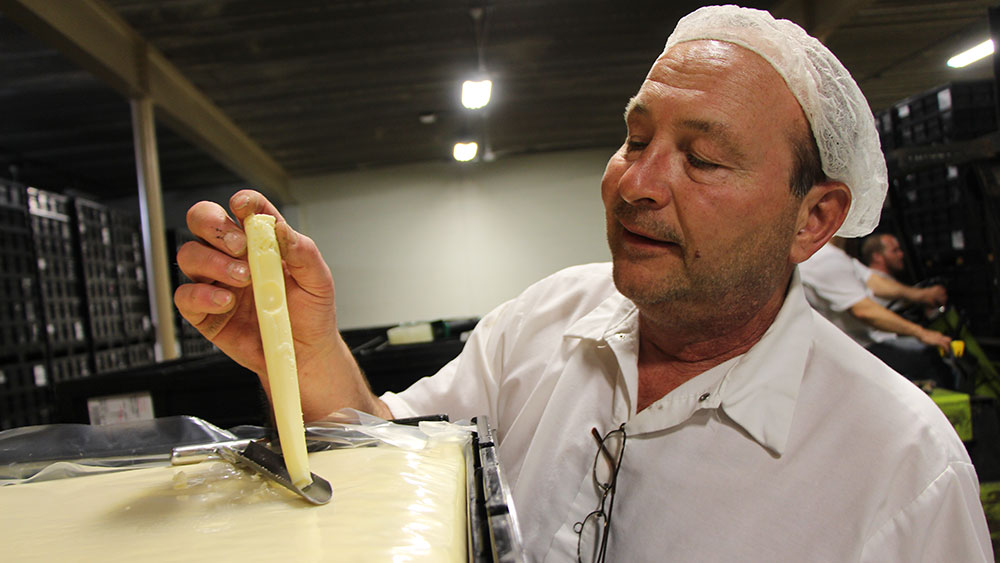Exploring Melbourne Made Cheese: Why Floridia Cheese Is a Must-Try
Exploring Melbourne Made Cheese: Why Floridia Cheese Is a Must-Try
Blog Article
Opening the Tricks of Artisanal Cheese Making: A Step-by-Step Do It Yourself Overview
In the realm of culinary workmanship, artisanal cheese making stands as a testimony to the fragile equilibrium in between practice and advancement. Each action in the process, from choosing the ideal milk to perfecting aging methods, holds within it a riches of expertise passed down through generations. As we begin on this trip to demystify the art of creating charming cheeses, we are faced with a tapestry of skills and tricks waiting to be unwinded. Join us as we explore the ins and outs of this old craft, where art, patience, and science assemble to create tastes that tantalize the senses.
Picking the Right Milk
When embarking on the journey of artisanal cheese production, the option of milk plays a vital duty in identifying the top quality and features of the end product. The kind of milk selected influences the flavor, texture, and overall account of the cheese. Raw milk, right from the pet, is preferred by lots of artisanal cheesemakers as a result of its unique mix of enzymes, bacteria, and taste substances. However, making use of raw milk comes with risks and policies, making pasteurized milk a safer choice for novices.
Furthermore, the resource of the milk, whether from cows, goats, lamb, or buffalo, adds distinct flavors and characteristics to the cheese. Each kind of milk brings its own subtleties, permitting for a broad array of cheese varieties to be crafted based on the picked milk.
Culturing and Coagulating
To initiate the cheese-making procedure, the vital steps of culturing and coagulating have to be thoroughly performed to change milk into curds and whey. Culturing involves presenting advantageous bacteria to the milk, which then starts the fermentation procedure. These germs convert lactose (milk sugar) right into lactic acid, producing the acidic environment required for coagulation. The kind of society utilized can substantially impact the taste, structure, and ripening of the last cheese item.

The timing and temperature control throughout culturing and coagulation are essential aspects that influence the final result of the cheese. Correct implementation of these actions is vital to make sure the preferred texture, taste, and uniformity of the artisanal cheese being generated.
Draining and Pushing Curds
After the milk proteins have coagulated and the curds have been cut to launch whey, the next important step in artisanal cheese making entails draining pipes and pressing the curds to attain the preferred structure and consistency of the last cheese item. Draining is the process of dividing the curds from the whey. This can be done by transferring the curds into a cheesecloth-lined bowl-shaped sieve or mold and allowing the whey to drain pipes off normally. The time for draining pipes can vary depending upon the kind of cheese being made and the desired wetness web content.
Pushing helps remove any kind of remaining whey and compacts the curds to develop a solid cheese wheel. Correct draining and pushing are critical steps that dramatically affect the high quality and attributes of the artisanal cheese being generated.
Aging and Flavoring Methods
Applying meticulous aging and flavoring techniques is pivotal in boosting the deepness and complexity of artisanal cheeses, elevating their preference accounts to elegant degrees of refinement and elegance. Aging plays a crucial duty in creating the special flavors and appearances that identify artisanal cheeses. During the aging process, cheeses are saved in meticulously managed atmospheres where elements such as humidity, airflow, and temperature are manipulated to encourage the development of advantageous molds and bacteria. This controlled setting allows the cheese to develop slowly, developing intricate aromas and abundant tastes.
Seasoning strategies also add significantly to the last preference of artisanal cheeses. Cheesemakers may pick to introduce added flavors by integrating ingredients such as natural herbs, spices, or also fruits into celebrity throughout the production procedure. Additionally, some cheeses Clicking Here are cleaned or rubbed with different liquids, such as salt water or alcohol, to enhance their flavors and textures.
Wrapping and Saving Cheeses

Verdict
In conclusion, understanding the art of artisanal cheese making includes thoroughly choosing the right milk, complying with precise culturing and coagulating procedures, draining and pushing curds effectively, and making use my review here of various aging and flavoring methods. Bear in mind to cover and store your cheeses effectively to make certain optimal taste and appearance development.
Each kind of milk brings its own subtleties, permitting for a broad array of cheese varieties to be crafted based on the picked milk.After the milk proteins have actually coagulated and the curds have been cut to release whey, the next crucial step in artisanal cheese making includes draining pipes and click for more pushing the curds to accomplish the wanted texture and uniformity of the final cheese product. Many cheeses should be covered in wax paper or cheese paper to allow them to breathe while shielding them from drying out. For cheeses that need to proceed aging, such as bloomy rinds or cleaned skins, ensure they are stored in a trendy environment like a cheese cave or a refrigerator set to the appropriate temperature. By paying interest to the covering and storage space of artisanal cheeses, cheese manufacturers and fanatics can maintain the stability of these specials and totally enjoy their intricate tastes.
Report this page